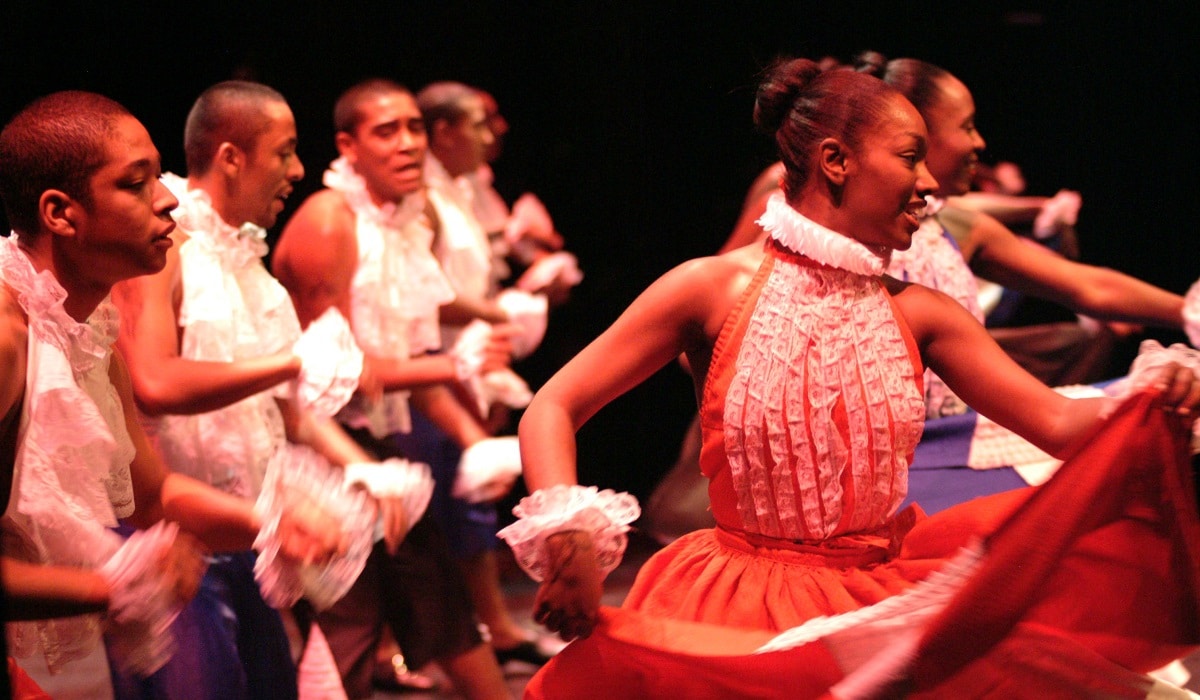
The music and the afro peruvian dance constitute one of the most colorful and unique artistic expressions within the cultural heritage of Peru. As its name indicates, the origin of these dances is found in the peoples of African descent who were brought to the country by force, as slave labor, from the XNUMXth century on.
At present the term Afro-Peruvian is used to designate the culture of the descendants of the various sub-Saharan African ethnic groups. The truth is that these populations experienced a deep miscegenation with the native and Creole population, thus giving rise to an interesting fusion.
The Afro-Peruvian population is located in two specific geographical areas: the central and southern coast (especially in the capital Lima y Callao) and the north coast around the city of Piura. Peru is the fourth country in South America with the largest population of African origin, only behind Brazil, Colombia and Venezuela.
Afro Peruvian dance styles
Without a doubt, music and dance are the most outstanding cultural manifestations of the Afro-Peruvian community. Through them, the slaves expressed their joys and sorrows, as well as their longing for their homeland.
In the call peruvian black folklore two elements are of great importance: on the one hand, the drums and other percussion instruments, whose cadence marks the rhythm of the dance, and on the other hand the rhythmic body language, which gives Afro-Peruvian dance an added value as a means of communication as well as an artistic manifestation.
More than 40 different types of Afro-Peruvian dances have been cataloged. Each of them has a specific meaning or it is linked to a certain moment or event in life.
These are the most representative dances:
The Alcatraz
This is a dance of high erotic content. Both men and women dance with a cloth or piece of cloth attached to the waist. The man carries a lit candle with which he tries to light the woman's handkerchief, who tries to avoid it by moving her hips voluptuously. Formerly, instead of a handkerchief, the woman wore a tail made of alcatraz feathers, hence its name. This dance is closely linked to the localities of Lima and Ica.
The Landó
It is believed that the landau comes from an ancient Angolan African ritual dance known as lundu. Its sexual character is also very marked, since at a given moment of the choreography the dancers emulate the sexual act with agitated pelvic movements. A good example of this dance is shown in the video above, the famous landau from "The washerwomen".
The Tondero
Although there are many towns that claim to be the cradle of tondero, it is most likely that it is in Tiura. There is no doubt about the influence of gypsy rhythms in this curious mix of dance and music. This dance is charged with emotion and is traditionally divided into three movements: the Gloss, a kind of long cry; the Sweet, in which the chorus appears; and the Escape, the most explosive part in which dance takes center stage, displacing music.
The Zamacueca
In this dance, African elements are combined with the traditions of some regional dances of Spanish origin that were brought to America during the conquest. Its name comes from the terminology used in Spanish Peru in the cockfighting. It is also known as song of jarana o Lima marinera. To dance the Zamacueca, women wear a short nightgown called anaco and huge artistic earrings called "sleepers."
There are those who maintain that it is not a genuinely Afro-Peruvian dance, since there are variants of it in other countries such as Bolivia, Chile and Argentina. In reality, the Zamacueca would have reached these countries through a single original Peruvian nucleus.
The Zapateo
These is another dance born from the fusion of African and European traditions, with a strong component of Arab origin. Afro-Peruvian zapateo is divided into two genders: major and minor. Performing this dance correctly requires many years of practice. In fact, authentic footwork is only available to dance professionals. In some cases, the dancers wear shoes very similar to those worn by the dancers. Dancers of flamenco in Spain.
The list could continue with other styles such as the Snow Water, It should, Pallas Hatchet and Bundle of Negritos (that are danced at Christmas), the Mozzarella typical of the Carnival time, the Navel, Pava, Slippery or They are from the Devils, to name just a few of the most popular.
All of them are dances full of color and feeling that reflect with great fidelity the African spirit of Peru.